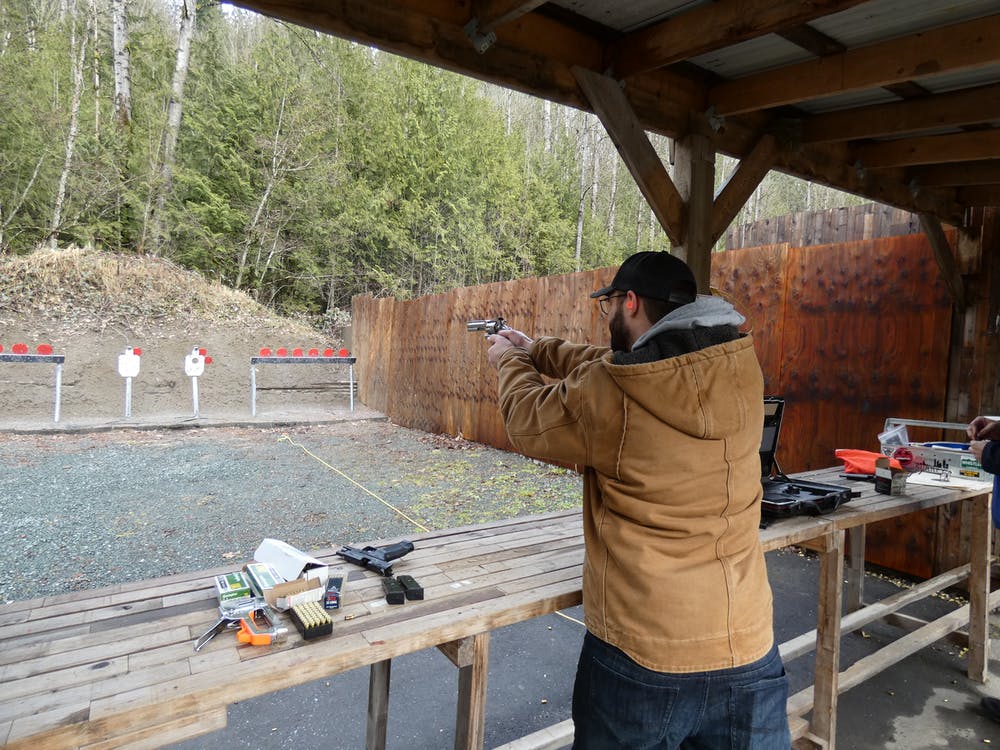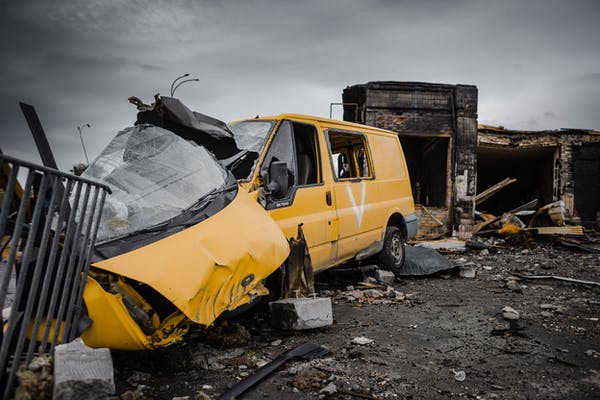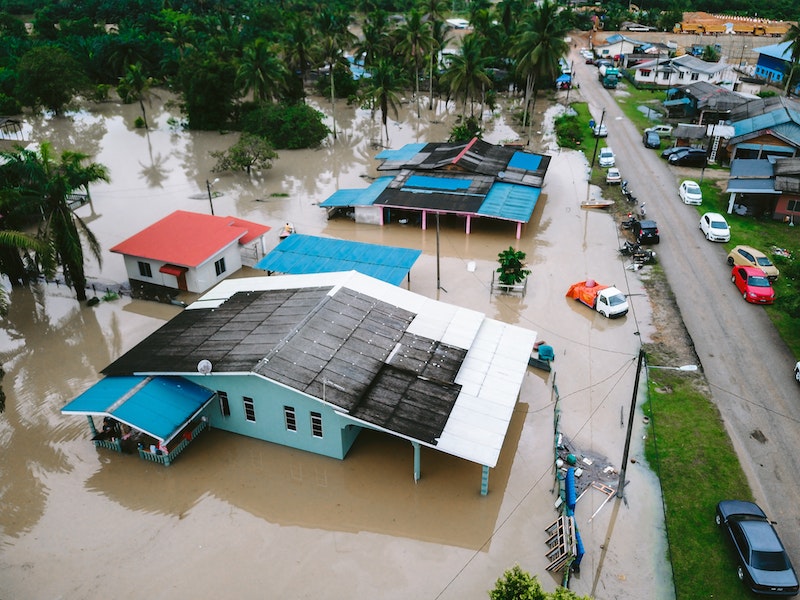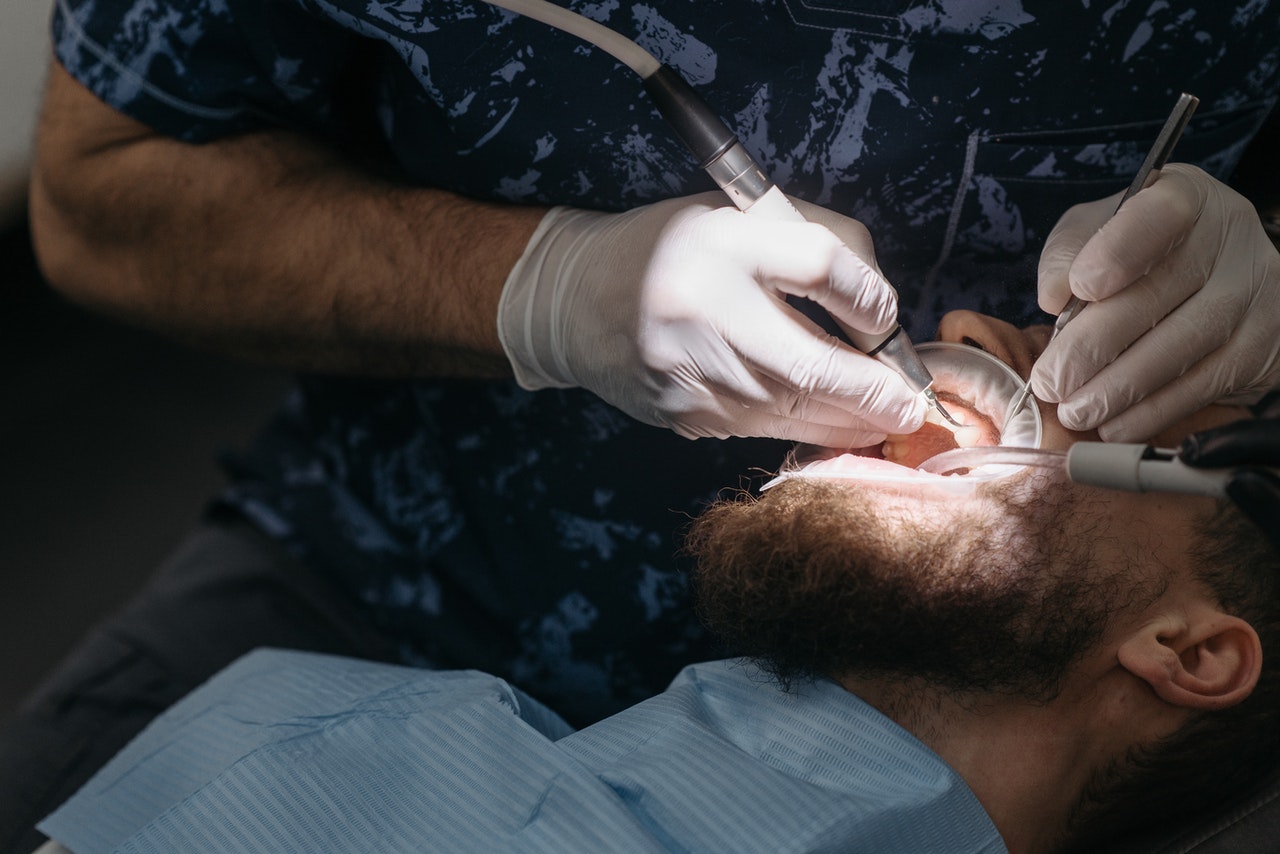26, Jan 2023
How Should I Prepare My Home for My New Baby’s Arrival?
Getting ready for a new baby might be challenging, and lots of people don’t know where to begin. When anticipating a new loved one, you must consider several factors to ensure that the arrival goes as well as possible. You should prepare your home to be a safe place for your infant and remove everything that might harm their health. So, how do you prepare your house for a new baby?
How to Get Your Home Ready for a New Baby
Changing your home from an adult-only place to a baby-friendly sanctuary may be difficult, and failing to prepare your house in advance is a formula for disaster. Therefore, taking additional preventive procedures is essential to keep your child secure. In this article, we’ll discuss how to prepare your house for a baby to make your experience happy and memorable.
1. Arrange and declutter your home.
Your home will become a storage facility for infant equipment and playthings, occupying a substantial area. It’s worth your time to clear, clean, and rearrange your home, especially if you live in a small space. You need to get rid of any old toys, furniture, or equipment that have built up dirt. Remember that newborns are extremely susceptible to airborne particles like mold spores. As a result, you must maintain the whole house clean. Employing mold removal companies Peabody might help you provide a clean and safe surrounding for your baby.
2. Remove peeling wall paints and repaint them.
Before bringing your child home, get rid of flaking paint from your walls and paint them. However, since strong paint odors could be detrimental to your child, this must be done a few weeks before your child’s arrival in your house. In addition, mold and mildew growth might happen if the peeling paint is caused by wetness. As a result, doing this job earlier might help avoid issues later. These arduous jobs should also be delegated to professionals. You can visit them at their office to get their services.
3. Maintain clean flooring.
Infants spend a lot of time on the floor. For that reason, extensive cleaning is essential. This is particularly important if you have carpets, which can rapidly become a breeding area for dust mites and mold. If your nursery has carpeting, clean it two times a week with a HEPA-filtered vacuum. These filters capture dirt particles, pet dander, and other allergies, hindering them from recirculating in the air.
Furthermore, if you want to guarantee that your floor is clean enough for your baby, you should seek the help of professional cleaning and restoration companies. They can determine potential mold-growing areas that could be unsafe for your child’s health. Remember that mold grows in moist surroundings, especially in kitchen areas prone to fire and water damage. Consequently, you must maintain your floor dry and clean to safeguard your family from health problems while protecting your house from damage through water and fire damage restoration services.
4. Monitor infant supplies.
Aside from the appearance of your house, you must also consider the baby supplies you will need, such as baby milk, diapers, medications, and towels, to state a few. If you are a working woman who wishes to breastfeed your child, you must consider buying a breast pump. Remember that babies can not convey their feelings verbally and will just cry if they need something, whether hungry, have a full diaper, or suffer from colic. As a result, gathering all the infant items you may need is crucial.
- 0
- By Heidi

21, Jan 2023
Understanding the Significance of Firearms Safety Courses
Many people are passionate about firearms. Whatever the reason, these individuals want to know how to use a gun safely and effectively. Firearms safety training courses are developed to educate people who have never handled firearms or how to operate, fire, and store them safely. These courses teach learners how to utilize guns safely in dangerous situations and the legalities of carrying a concealed weapon or handgun permit.
What to Look For in a Firearm Safety Course
Taking a gun safety course could be useful for a variety of reasons. Regardless of prior experience, anyone can benefit from taking a class on handling one properly. Perhaps you are considering obtaining a concealed firearm permit for yourself soon. Maybe you’ve recently discovered a passion for target shooting and are eager to improve your skill sets.
No matter what your situation is, a gun safety program is available to help you become a better shooter. It can be challenging to make a decision about which course to take because there are so many to pick from. Below are some things to look for in the course that you will choose.
Instructor’s Experience
Regardless of where you choose to take your gun safety course, you should keep an eye on the best information it offers. Having an instructor with knowledge and experience with the guns you wish to operate is essential. A trainer without years of experience is still learning and may teach you inappropriate behavior. Find a time to meet with one of the academy’s instructors before enrolling in a program.
Ask about their background to establish whether or not they are qualified. In addition to having experience handling firearms, instructors should also have experience teaching about gun safety. Additionally, getting an occasional RPAL license membership can be beneficial if you do not currently affiliate with a shooting club; discuss this with your instructor if this describes your situation while you are taking a gun safety course.
Check the Academy’s Affiliations
A respected instructor usually has a solid reputation in the neighborhood where they teach. This means that they are sought out by various groups like law enforcement departments, gun clubs, and even the armed forces to supervise training or teach a safety training course. Since these institutions know what makes a good gun safety instructor, you can bet on the individual they recommend. It’s a good idea to check out local gun ranges if you are interested in getting some ecreational shooting experience or simply want to learn how to use a gun safely.
Detail Procedures for Each Course
There is always a set schedule for any gun safety program. It’s a system they’ve developed for many years of teaching various classes. The steps will give you an idea of what knowledge you’ll gain from it throughout the process.
Moreover, it serves as a routine for the instructor to follow. Considering everything is laid out for them, they will not need to wing it or go backward. They only need to stick to the plan and impart their experience and knowledge to you at the appropriate times.
Recommendations From Friends
Surely you know at least one person passionate about firearms and outdoor shooting sporting clays events. If so, they most likely know someone who teaches how to handle rifles properly. If they don’t know any individual personally, they can at least put you in contact with a colleague of theirs who does.
Finding a qualified teacher or advisor by means of personal connections is always an advantage. If you ask around and get the same teacher’s name mentioned more than once, that’s a good sign that they’re the real deal.
The Necessary Length of Course
The number of weeks or months required to complete each safety course will be provided. Before enlisting in a class, it’s important to evaluate your availability and figure out if you can devote the time necessary to get the most out of it. The course will be a fulfilling and stimulating experience; you just need to make room for it in your schedule.

17, Jan 2023
Multiple Forms of Debris From Construction Projects
Due to the massive amount of trash generated during construction, demolition, rehabilitation, and other construction-related activities, this sector has long been considered one of the largest sources of negative environmental impact.
The most frequently asked question is, “What exactly are these forms of construction waste?” Can people detect these types of waste? Furthermore, there have been concerns asked about whether they pose a risk. Construction projects will likely require a combination of the two. Thus, it is crucial to be familiar with the many forms of waste, so you can know what they are and how to dispose of them appropriately.
What is considered to be construction waste?
Particular wastes must be removed by unique environmental service providers, while others can be deposited with regular garbage. Knowing what recyclable materials are is essential to ensure an environmentally sustainable economic system. This article will investigate the numerous types of waste generated in construction projects.
1. Building Materials
Construction materials are one of the more well-known materials utilized in construction. Materials like wire, nail insulation, rebar, wood, plaster, scrap steel bricks, cement, and other materials are just a few examples of such materials. Most of the time, these materials become garbage because of some damage. However, in certain situations, it’s because they’re not used.
The bright side is that many of these materials are recyclable. Wood is one material that can be reused repeatedly in various contexts. When wood is destroyed in a landfill, it could be reused to be used in construction. These wastes typically require straightforward disposal methods, but proper disposal is still needed.
To gain knowledge about the dimensions of the dumpster, you can contact a local dumpster rental company.
2. Dredging Items
Materials that are removed when preparing a building or demolition site are called dredging materials. In simpler terms, they are components of nature, like stumps of trees, dirt, rocks, or even rubble.
Even though dredging debris isn’t typically considered hazardous, it must be removed by a trash management firm offering dangerous safe waste disposal and trash removal options. For roll off dumpster rental, you can search for a company that offers such a dumpster and contact them immediately for scheduling and prices.
3. Hazardous Waste
One of the most crucial aspects of managing construction waste is recognizing and adequately handling hazardous waste. Hazardous waste poses risks to the general public and those who deal with or manage it if not managed appropriately.
Leading examples of hazardous waste the construction industry generates are lead, asbestos, plasterboard, paint thinners, strippers, mercury, fluorescent bulbs, and aerosol containers. State and federal laws regulate how to dispose of dangerous substances. Non-compliance with these requirements could result in releasing harmful substances into the environment or the levy of fines.
To get in touch with a commercial waste compactor in Philadelphia, you can search online for reputable companies that provide such services.
4. Demolition Debris
Demolition projects generate a unique assortment of trash categories. That’s why it’s common to classify them into several different categories.
The most hazardous substances are in the first class of demolition debris, which comprises asbestos and insulation. Non-asbestos-containing materials, such as concrete, bricks, tiles, and ceramics, contain another category of demolition debris. The third category of demolition debris includes things such as glass, wood, and plastic.
5. Treated Materials
Many construction projects call for dangerous materials, like specially-treated wood, glass, and plastics. Wires dripping with oil, coal tar, and other poisonous substances are a few examples of metals requiring extra care. In addition, dangerous compounds can leach into the ground, making soil and rocks unsafe to be touched. Asbestos-containing materials, for instance, are included in this category.
Drywall and other masonry particles composed of gypsum could be considered to be hazardous when they contain dangerous gasses or chemicals. Solvent-based varnishes, paints, adhesives, and sealants will also be classified as hazardous waste.

6, Jan 2023
Avoiding Flood Damage to Your Home With Landscaping
You’ve spent a lot of effort to keep your house beautiful. However, a torrential downpour can quickly sludge away all your efforts. Sometimes, rain, and the occasional thunderstorm, may occur on any given day, according on where you are in the country. You are probably familiar with dealing with these types of weather out of season. In this case, you may know how to prepare your yard best.
However, suppose you have recently bought a house, relocated to another city or state, or haven’t experienced the weather that this one has. In that case, you need to know how to prepare your backyard for floods.
Flood Prevention Through Landscaping
Most homeowners are likely worried about the possibility of flooding in their houses. But it is optional for the need to make expensive changes to your foundation or an expense-intensive waterproofing solution. Soak up some sunshine and do some work while you study how landscaping techniques can redirect water flow away from your property.
1. Rain Garden
They are low-lying landscaping features that divert water from your lawn and driveway. They’re constructed using an altered soil mix. The mix comprises sand, compost, and the current topsoil. This mix permits the water to drain quickly and evenly across the surface.
Rain gardens can be planted anywhere in a backyard. They are often found near the property’s edges, near the road. Plants requiring little care and care are utilized to decrease erosion and runoff rates.
For property damage solutions, you can click here to continue and connect with a trusted restoration company.
2. Native Plants
What you plant in your yard is just as important as how you plant it. Plants native to the area serve as a natural barrier against greasy residues and runoff. Additionally, they tend to be more robust and drought-resistant.
Due to their more extensive root systems, plants are better equipped to absorb and filter contaminated water before it can seep into the soil. Also, your garden will be cleaner and more beautiful because of the more beneficial pollinators attracted by native plants.
For other property damage, you can search online and type in “restoration services near me” on your search bar and check the best results available in your area.
3. Grade
One of the essential landscaping guidelines to prevent floods in basements is to level away from your home. Before planting seeds or laying sod, you’ll need to ensure the soil is leveled off from your house. This gentle slope, coupled with grass’ inherent ability to absorb water, makes for a low-maintenance and excellent method for controlling floods.
Constructing walls or a barrier between your garden and the siding plot is essential if you plan to develop or improve the area around your home. A trench should be dug and filled with stones to keep water from getting in.
For severe water damage, you can ask the aid of a water damage restoration provider in your area.
4. Trenches and French Drains
Many houses have hardscaped trenches, French drains, and a fence along the garden bed. Building a dry creek bed within the backyard’s middle made of river rock and then grading the area away from home is a more straightforward option.
The landscaping of modern homes generally includes French drains or perimeter drains. Trenches, paved with tile and rocks, extend from the property’s edge under the lawn. They redirect water away from your property using PVC pipes and decrease the water in your yard.
5. Gutters and Downspouts
Make sure you clean your gutters often if you haven’t done so already. It collects right next to it if the water isn’t flowing away from your foundation because gutters are clogged with leaves and other debris.
Downspouts can be easily removed from their appropriate locations on the property. Pooled water can cause structural damage if not removed from the building’s base. Downspouts must be checked regularly and then redirected if needed. Additionally, having a drainage area that the downspouts run through and filling it up with gravel or river rock can assist in slowing the process of water absorption into the soil.

2, Jan 2023
Pet Care 101: How to Improve Your Senior Dog’s Quality of Life
You’ll want your older pet to remain as comfortable as possible while you enjoy your time together as they enter their golden years. Their physical and mental abilities will probably change. They might no longer manage to participate in the same activities they used to or seemed less enthusiastic. To help your pet adjust to the changes that come with getting older, comply with this advice.
Tips for Improving Your Elderly Dog’s Quality Of Life
No matter how old a dog becomes, that doesn’t mean they stop enjoying. Despite their age, your pet will still enjoy snuggling, walking, and having fun with you. Maybe their best years are coming ahead. Comfort from their owners is all they need. Below are the 6 advice that will help your pet live a better life.
1. Health and Nutrition
High-quality dog food is the basis of a pet’s health, no matter what age. You may quickly discover excellent options for your aging pet among the many dog food manufacturers. They’ll need more healthy protein and less calories. Your pet’s nutritional requirements will alter eventually, and the food you provide should help keep them healthy. Foods rich in antioxidants, glucosamine, and chondroitin are great picks.
3. Monitoring
Checking your dog’s health and wellness is essential, despite how old they might be. When they’re elders, it’s even more essential. You need to recognize early signs and symptoms of some diseases and disorders that might affect their lifestyle. If you do this, you and your veterinarian will manage to respond more quickly and begin treating your dog sooner. So, healing proceeds quickly and efficiently.
2. Adjusted Schedule
Adult pets often require three daily strolls. Your elderly dog might have varied demands, which may necessitate more potty breaks. You can either let them out more frequently or take them on a few shorter everyday strolls rather than locking them inside. Including additional walks in their schedule can prevent them from conducting business inside your house.
4. Physical Activity
An elderly pet is likely to be less enthusiastic than it once was. However, that doesn’t imply they will just sit around your house doing nothing. As your dog ages, they still need to be trained and given a healthy outlet for their stamina. Make sure your dog’s physical activity is suitable for their age and that they don’t place themselves under too much stress by overdoing it. Ask a dog trainer for help on how to train and exercise your senior pet. In case your pet got injured and needs surgery, click here.
5. Mental Activity
Cognitive decline is a part of aging. As a responsible pet parent, slow it down as much as possible. Initially, you need to include a diet program that supports good brain function. The second step is to keep their mind busy. Their mind resembles a muscle that needs exercise. It will get stronger and healthier the more you exercise it. Visit johnscreekvet.com for more information.
6. Frequent Vet Visits
Most significantly, ensure your pet gets frequent appointments. Your veterinarian can notice things you might overlook. Preventing an issue from turning into a problem for your dog could be done by taking them to the veterinary for regular consultations. Never miss a dog wellness exam with your dog’s vet; be sure he receives frequent health checks and wellness tests. This might seem costly, but this will ultimately save you money in treating a condition you didn’t even know they had until it was too late. Also, you can’t price your pet’s health, can you?

29, Dec 2022
Top 5 Ways Water Trucks Are Used
Water trucks are specially designed vehicles designed to move water and distribute it through the tanks housed on the vehicle’s chassis. Because of their adaptability and ease of use, water truck tanks and bodies are frequently used in many specializations, such as dust management at building sites.
What other purposes do water trucks serve?
Water trucks are helpful in many areas since they provide efficient and easy ways of transporting and dispensing water. A water truck part of your fleet could assist business operations in many ways. The most common water truck jobs are as follows:
Residential
Water trucks can deliver potable and non-potable water to homes. The water is then used for many functions, such as dust control, tree and plant irrigation,ground leveling of dirt roads and driveways. Filling up ponds, swimming pools, and water tanks, carrying drinking water to the water tank, and helping with fire suppression.
Sometimes, these vehicles deliver massive amounts of water directly to homeowners. As previously stated, homeowners can contact water delivery companies should they need water during droughts or for personal use. You may check their website for further information.
Commercial
Water trucks are used on commercial construction sites in many ways. Water trucks can deliver water to remote areas for work and distribute water for dust or compaction, clean off equipment and roads, wash filter materials, power water-driven machinery like pressure washers, and water delivery for rinks.
Since water trucks can be modified with the help of support equipment, Businesses should research and purchase the equipment needed to ensure that the water truck can fulfill its purpose at specific job sites. Dribble bars, sprayers, hose reels, hoses, and cannons are only some of the accessories for a water truck. Water trucks are also available with a wide range of tank styles. Picking the appropriate design and adding tailored support equipment to a water truck can improve its capabilities and permit it to carry out various tasks.
Farming and Agriculture
The use of water trucks is numerous in agriculture. Since many farms are located in remote areas, and sudden droughts could severely interrupt production and workflow, using a water tank is crucial for day-to-day activities. Farmers can utilize water trucks to supply irrigation for agriculture and clean water and water supplies for livestock, compaction, and dust control on rural roads. Many farmers will purchase water trucks to keep ready for emergencies, especially during the rainy season and dry periods when water is available.
Disaster and Fire Fighting
Water trucks are vital in fighting fires, particularly in remote and rural areas without a fire water supply. Local governments and municipal authorities can employ these vehicles to spray water to extinguish fires and serve as a dampening device in areas prone to fire. Water trucks could be used to combat water shortages and droughts induced by hurricanes, tornadoes, and other natural disasters.
Engineering and Mining
Construction sites and mining sites are more hazardous places without appropriate dust-control equipment. The excessive amount of dirt particles can harm machinery and cause harm to workers working in the construction and mining industries. This is why tanks for water are crucial for dust control, leveling the ground, and preparing the soil for road mining, buildings, and roads.

26, Dec 2022
Pet Wellness Checks and Diagnostics Involved
The expression “pet wellness exam” refers to a routine examination performed on an animal even when your pet appears healthy. The word “wellness exam” can also apply to a physical exam or a check-up. Wellness exams are conducted to ensure that your pet is in optimal health.
Check-ups for puppies and other young animals are recommended every month. A typical adult pet should visit a vet yearly for a check-up. Check-ups for pets who are older are scheduled at least every six months. Ask your veterinarian about the frequency of wellness exams if your pet suffers from a particular ailment.
Tests Done on Pet Wellness Exams
Even the most healthy pets could hide from illness due to their remarkable capacity for deception. If a pet’s health issue is identified before it shows any signs, it will generally be managed or treated to limit the adverse effects that may occur over time. The tests to assess a pet’s health typically include the following.
1. Complete Blood Count
This method teaches us about the different types of blood cells. Blood cells play various roles, including transporting oxygen to cells, fighting infection and inflammation, and aiding with clotting blood. The complete count of blood (CBC) can tell you if you have any abnormal cells as well as their amount of size, number, and type. It’s a standard test for diagnosing a wide range of diseases.
2. Biochemistry Profile
This battery of tests can help diagnose diabetes, liver disease, kidney disease, and other illnesses by providing information on the body’s organs and tissues. Your doctor may suggest conducting a biochemistry analysis in the next few days, weeks, or months if it reveals only subtle changes from normal. A more detailed biochemistry profile done in a vet lab and imaging tests like radiographs (X-rays) or ultrasounds can be recommended in cases where the abnormalities are more serious.
3. Urinalysis
A simple urinalysis will reveal the physical and chemical properties. The results of a urine test are used to evaluate the condition of kidneys, identify urinary tract infections and rule out inflammation. In addition, it aids in identifying cancers of the urinary tract and detecting diabetes. Every wellness check in a Charlotte animal hospital should consist of urine tests to give you a complete view of how well your urinary tract and kidneys are.
4. Thyroid Testing
The thyroid gland is the body’s thermostat, controlling metabolism. If the thyroid gland does not generate sufficient thyroid hormone, it is known as Hypothyroidism. It is dogs’ most frequently encountered thyroid disease. Conducting regular hormone tests for senior and middle-aged dogs is vital. Hypothyroidism is a condition that can affect dogs at any age. It’s, therefore, essential to check for it if a dog suddenly gains weight, becomes tired, frequently has skin or ear infections, or loses hair on its body or tail.
5. Fecalysis
Fecal tests are recommended every year at least two times for the majority of pets. The main objective is to spot gastrointestinal parasites such as hookworms, tapeworms, whipworms, and roundworms. These parasites thrive in your pet’s digestive tract and can be a nightmare for both of you. The eggs or worms are transported in tiny amounts through your pet’s feces, making them easy to detect under a microscope.
Aside from pet wellness examinations, you can also avail of boarding services from trusted veterinary hospitals, like Sharon Lakes Animal Hospital, to ensure your pet’s safety and security when you are away.
25, Dec 2022
8 Things to Do to Fix Water Damage After a Fire
There’s no doubt a fire in your home could cause much damage. Not only can the flames destroy everything in their way, but they also leave behind corrosive chemicals after the fire is out.
The water used to quench the fire could do much damage to the building. If the water damage is not fixed quickly and correctly, it can lead to mold growth, structural damage, and other significant problems.
How to Fix Water Damage
Almost every home or business where the fire department used hoses to put out a fire will need these repairs. Even a tiny fire needs a lot of water and pressure from the hoses to be put out. If the damage is severe, it might be best to call a professional disaster remediation company.
Cleaning
It needs to be cleaned. Once you’ve removed most of the broken things, you need to clean and disinfect them as soon as possible. It will have to be done repeatedly, and depending on the damage, you may have to clean the same areas more than once. Using bleach solutions and other disinfectants is the best way to avoid significant health risks.
Growing Mold
Mold is a big problem that can be hard to eliminate after a fire. Professional mold removal services are a must in this situation. There are many kinds of mold, and you don’t want any of them in your home or business, but black mold is nasty. Cleaning is a must if you don’t want mold to grow. Still, you should check all parts of your home or business carefully and return to those areas even after the repairs are done to ensure mold isn’t spreading.
Wood Damage
For example, wooden floors and furniture quickly leak water and get damaged. It is crucial to get rid of wood that is very wet or damaged. Look for indications of water damage on the floors, cabinets, and doors. You might want to save some of it, and in some cases, you might be able to, but it’s better to throw it away.
Ceiling Defects
First, the ceilings should be looked at when fixing the damage. If your roof is damaged, it could fall and cause more harm to your home or business, which is already damaged. Some ceilings might need to be replaced, but You can change ceiling sections. After a fire, it can be hard to inspect and fix roofs that have been damaged. You might require expert assistance.
Drywall Defects
The drywall may have been the most damaged, depending on how destructive the fire was and how much water was needed to put it out. Damaged drywall is annoying, but it is better than dealing with rotting wood. You can save some drywall by letting it dry out, but some will have to be torn out and replaced. You’ll save time and money if you only fix the broken parts of your drywall.
Caulk and Seal
If there has been water in a home or business for a long time, the seals on things like bathtubs and toilets will be broken. If these seals break or come loose, they could cause much damage. Check all the seals and caulk any that don’t work after cleaning up.
Electrical Surge
Because of all the damage, the electrical parts in your home and the wiring behind your walls may now be a fire risk. The fire, smoke, and water most likely damaged your electronic devices, like computers and TVs. You should change these often, and your insurance may pay for them. If you don’t know what you’re doing, call a professional immediately if your electrical systems have been broken.
Carpet Damage
After a lot of water damage, carpets may be home to mold and other harmful substances. You can fix some carpets and rugs, but others must be thrown out and replaced. Carpets are hard to look at and determine if they can be saved, so you must put in the time and effort to dry and clean them properly.
Conclusion
After water damage, you don’t want residual moisture to linger. Before, during, and after repairs, drying out your home or business should be a top priority. Use fans to move the air in each room and dehumidifiers in places where the water damage is the worst. In the worst cases, you may need industrial dehumidifiers, in which case you should talk to a fire restoration Palm Coast.
18, Dec 2022
Home Preventive Measures to Prevent Water Damage
Water damage is a common and often overlooked example of a minor issue in the home that can quickly become a major issue. While it is easy to assume that a small leak in the bathroom or roof tiles will not cause much trouble, the truth is that over time, a small leak can be the beginning of a much larger problem, including mold and even worse.
Which factors significantly contribute to water damage?
Most building water damage is caused by aging, failing, or damaged plumbing fixtures and pipes. A lack of routine plumbing maintenance causes most water damage.
Water damage has been linked to leaks or defects in
- Roofs
- Toilets
- Sprinklers
- Water heaters
- HVAC systems
- Overflowing gutters
- Leaking AC units
- Weather-related incidents
What are the signs, causes, and solutions for water damage?
This article describes the top four types of water damage and what you can do to prevent them from assisting you in stemming the tide. If you see any of these occur in your home, you should contact mitigation companies in Oak Park for help.
Damp floors
There are numerous causes of damp floors, including blocked vents, insufficient subfloor ventilation, and water accumulation beneath the structure. Mold growth, wood rot, and a musty odor are all signs of damp floors. When you act as soon as you observe any of these symptoms, you can solve the problem with the least effort and money.
Clear any clogged vents, clean up debris and dried leaves from beneath your flooring, and inspect your gutters to ensure no water is pooling beneath your home. If the problem persists, contact the professionals who can determine the moisture level in your home and whether water damage restoration services are required.
Roof leaks
A variety of factors can cause roof leaks. Lack of roof maintenance, metal corrosion caused by various metals on the roof, improper installation, or punctured sparking under the roof is the most prevalent of these problems.
Water stains on the walls or ceiling are the first sign of a ceiling leak, followed by puddles or mold growth on the floor. Even though it may be tempting to ignore the problem, doing so increases the likelihood that water will contact your electrical wiring and cause a short circuit or fire.
Identify the source of the leak as soon as you become aware of it to avoid any potentially negative outcomes. If necessary, contact a group of professionals skilled in water damage restoration, and they will immediately address any issues you encounter.
Flexible hose rupture
Flexible hoses are made of plastic tubes wrapped in stainless steel braid. They are most commonly found as a water connection to a toilet, a cistern, or beneath a kitchen or bathroom sink. They usually rupture or puncture due to installation damage or wear and tear caused by repeated or excessive manipulation.
Wetness beneath the sink or water dripping onto the floor from outside the pipes are the first warning signs. Immediately turn off the water if you discover a leak. To avoid this type of water damage, inspect the pipes and hoses under the sink regularly and avoid storing items that could harm the plumbing.
Obstructed drain
Among the causes of a clogged drain are tree roots, baby wipes, kitchen towels, and sanitary products. Water pooling in the drain may be an early indicator of a clog in the drain. When it rains heavily, this can cause enormous damage if ignored.
Locate the source of the obstruction and remove it as soon as possible. If you cannot unclog the drain, only use your toilets or sinks after resolving the problem. Instead, contact professionals immediately.
You may click here to learn more about property and water damage restoration services.
Conclusion
We recommend hiring water damage restoration specialists as soon as mold grows. Restoration specialists must mitigate the risk of secondary damage caused by mold spores. Health-wise, exposing yourself or your family to mold spores or the cleaning products used to eliminate them is not advised.

15, Dec 2022
Ensure Your Child Has a Positive First Dental Experience
Dental exams for the very first time may be stressful for both parents and their young children. Finding a dentist who will put your child at ease while offering excellent dental care is vital. The first “well-baby” appointment with a pediatric dentist should be scheduled before the age of one or six months following an eruption on the teeth of their first, whichever comes first.
Tooth decay in toddlers and babies is increasing and can appear shockingly young. Cavities and tooth decay in infants can be intensely painful if they’re not dealt with early enough and could also set the scene for a lifetime of bad dental hygiene.
First Dental Visit Preparations
It is always possible to do easy things at home to ease the transition and make the initial visit to the dentist one that your child is looking forward to. Please help your child gain confidence and be ready to take a seat at the dentist with these tips to help them prepare for their first dental visit.
Choosing a Pediatric Dentist
It is more convenient to take your child to your dentist regularly, but it is better to visit a pediatric dentist or an emergency dentist Okotoks, who will meet your child’s requirements. After graduating from dental school, these professionals typically spend an additional 2 to 3 years of a residency program where they receive extensive training in pediatric dentistry.
As experts in the field of pediatric dentistry, they are aware of their patient’s oral health in a way that general dentists don’t. When it comes to oral health, they are the top choice for children of any age, from infant through young adulthood, which includes kids with special requirements.
Talk Positive About the Experience
Researchers have found that parents’ anxiety about going to the dentist or orthodontics in Airdrie, may be passed on to their children. So, even if you don’t like going to the dentist alone, you shouldn’t let that show when you’re in front of the child.
Let your child know it’s normal to be anxious about doing anything for the first time. Give your child lots of positive reinforcement by praising their bravery even if they’re fearful of visiting the dentist and anxious about their first visit. Be careful to give them only a little information.
Role-Play With Your Child
Role-playing could assist if your child is experiencing a problem adjusting to a new setting. Create a fake dental clinic in the period before their visit. Pick a pet you like and pretend to wear it to the dentist.
You can also make them play dentists and then have them take a count and clean their teeth. Inform them of the process and explain why good dental hygiene is essential. Switch places or let your child have the chance to be the dentist with a stuffed animal.
Read Books About Going to the Dentist
A visit to the dentist is just one of numerous situations where an excellent book can prove beneficial in preparing children for what’s to come. Cartoons in which kids’ favorite characters enjoy trips to the dentist can alter their views better. Because there are so many great books about the subject, choosing one can be challenging—an enormous amount of time.
Bring a Comfort Toy
Bring your child’s stuffed animal or toy to the dentist’s appointment if they have one. The dentist for dental implants Markham, will be delighted by the distraction. They will feel better as they feel relaxed, at ease, and secure with an established and trusted friend.






